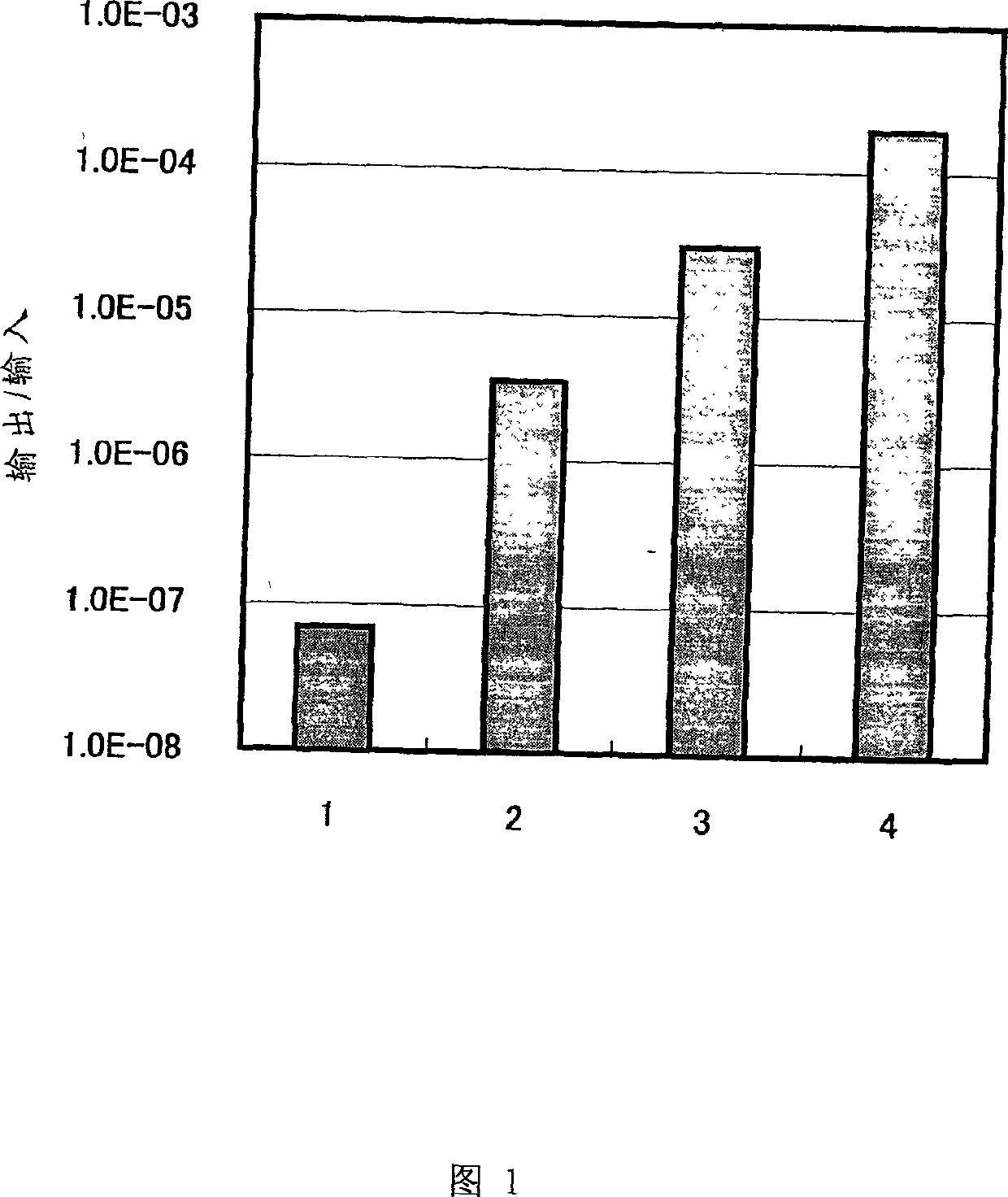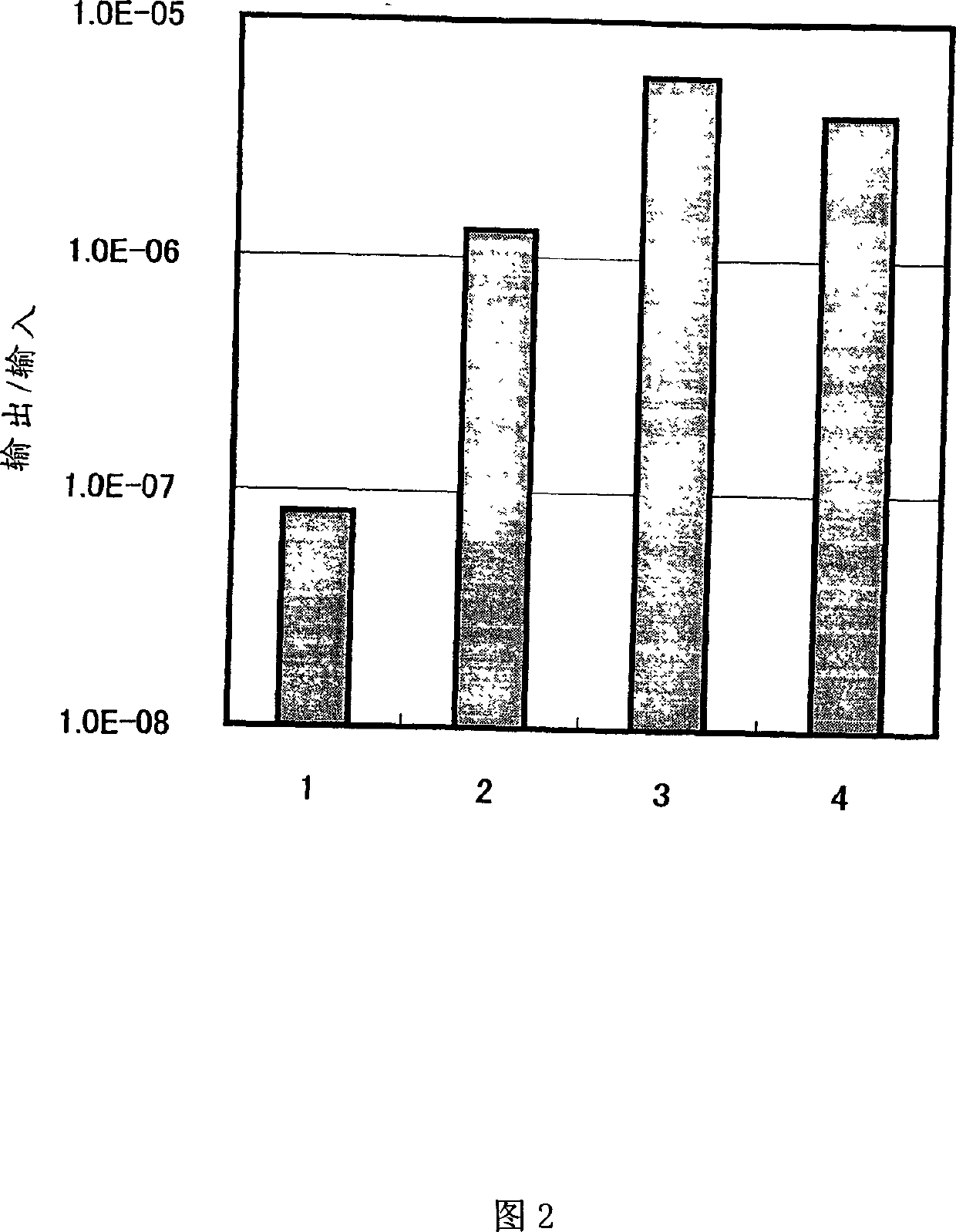Peptides capable of binding to titanium, silver and silicone
A technology of binding capacity and conjugates, which can be used in hybrid peptides, compound screening, peptides, etc., and can solve problems such as increased binding capacity
- Summary
- Abstract
- Description
- Claims
- Application Information
AI Technical Summary
Problems solved by technology
Method used
Image
Examples
Embodiment 1
[0081] Add 10 mg of titanium particles with a particle size of 150 μM (Sumitomo Chitanium, Hyogo) to a 1.5 ml eppendorph tube, and use 500 μl of 50 mM Tris (hydroxymethyl) methylamine (hereinafter, Tris (Kishida Chemical, Osaka)) pH 7.5 0.1% bovine serum albumin (hereinafter BSA) 0.1% polyoxyethylene sorbitan monolaurate (hereinafter, Tween- 20 (SIGMA Company, St.louis)) and washed twice. The titanium particles were precipitated by a desktop centrifuge H1300 (コクサン) at 13,000 rpm for 5 seconds, and the supernatant was removed to clean the titanium particles. After washing, in order to block the non-specific adsorption of the phage, rotator RT-50 (Taitech Co., Ltd.) was further used to rotate and stir in 1 ml of the same solution at room temperature for 30 minutes.
[0082] The titanium particles were precipitated by centrifugation in a desktop centrifuge H1300 (コクサン) at 13,000rpm for 5 seconds. After removing the supernatant, a phage library containing a peptide display was ad...
Embodiment 2
[0093] Using the phage clones obtained in Example 1, the binding ability to titanium was evaluated according to the following experiment. The same method as the panning operation shown in Example 1 was carried out. Different from Example 1, the stirring time between titanium and phage clones was 1 hour. When the concentration of Tween20 in each solution was 0.5%, and the concentration of BSA was 1%, the clone obtained from D12 according to the added phage titer was 10 9 pfu, 10 for clones obtained from C7C 11 pfu-implementation. The titanium-binding abilities of the individual phage clones are summarized in FIG. 5 .
Embodiment 3
[0095]According to Example 2, especially for the clone (presenting the peptide of SEQ ID NO: 3) that strongly binds to titanium, it is measured by the crystal oscillator-shaped biomolecular interaction analyzer QCM-D300 (q-sense AB company, イエテボリ) To study the binding mode of titanium surface and phage.
[0096] In the crystal oscillator, the titanium sensor of the QCM-D300 genuine product is used. The temperature is set at 24.99°C, and the measured value is from 24.68°C to around 24.70°C. Measured under the condition of blocking the sensor with BSA and under the condition of not blocking the sensor. When the sensor is not blocked with BSA, after measuring the reference value with TBS, the titer of the phage measured in sequence is adjusted to 10 10 pfu / ml of phage solution. When blocking with BSA, after measuring the reference value with TBS, incubate with TBS and 0.1% BSA for about ten minutes to block, wash the free BSA with TBS again, and adjust the titer of phage to 10...
PUM
 Login to View More
Login to View More Abstract
Description
Claims
Application Information
 Login to View More
Login to View More - R&D
- Intellectual Property
- Life Sciences
- Materials
- Tech Scout
- Unparalleled Data Quality
- Higher Quality Content
- 60% Fewer Hallucinations
Browse by: Latest US Patents, China's latest patents, Technical Efficacy Thesaurus, Application Domain, Technology Topic, Popular Technical Reports.
© 2025 PatSnap. All rights reserved.Legal|Privacy policy|Modern Slavery Act Transparency Statement|Sitemap|About US| Contact US: help@patsnap.com



